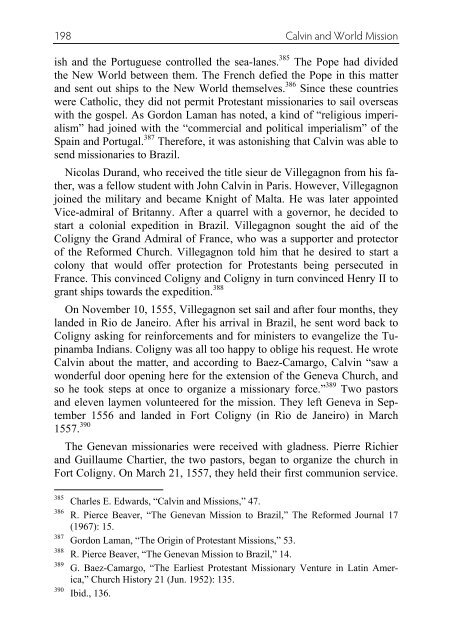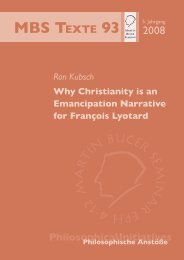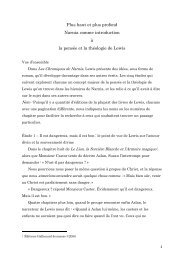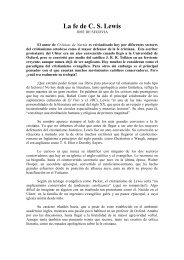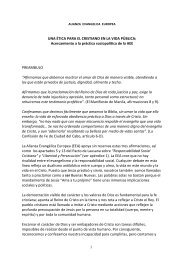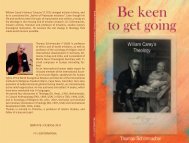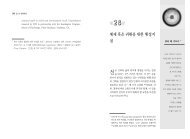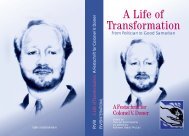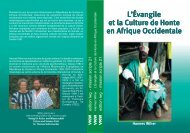Calvin and Missions - World Evangelical Alliance
Calvin and Missions - World Evangelical Alliance
Calvin and Missions - World Evangelical Alliance
Create successful ePaper yourself
Turn your PDF publications into a flip-book with our unique Google optimized e-Paper software.
198 <strong>Calvin</strong> <strong>and</strong> <strong>World</strong> Mission<br />
ish <strong>and</strong> the Portuguese controlled the sea-lanes. 385 The Pope had divided<br />
the New <strong>World</strong> between them. The French defied the Pope in this matter<br />
<strong>and</strong> sent out ships to the New <strong>World</strong> themselves. 386 Since these countries<br />
were Catholic, they did not permit Protestant missionaries to sail overseas<br />
with the gospel. As Gordon Laman has noted, a kind of “religious imperialism”<br />
had joined with the “commercial <strong>and</strong> political imperialism” of the<br />
Spain <strong>and</strong> Portugal. 387 Therefore, it was astonishing that <strong>Calvin</strong> was able to<br />
send missionaries to Brazil.<br />
Nicolas Dur<strong>and</strong>, who received the title sieur de Villegagnon from his father,<br />
was a fellow student with John <strong>Calvin</strong> in Paris. However, Villegagnon<br />
joined the military <strong>and</strong> became Knight of Malta. He was later appointed<br />
Vice-admiral of Britanny. After a quarrel with a governor, he decided to<br />
start a colonial expedition in Brazil. Villegagnon sought the aid of the<br />
Coligny the Gr<strong>and</strong> Admiral of France, who was a supporter <strong>and</strong> protector<br />
of the Reformed Church. Villegagnon told him that he desired to start a<br />
colony that would offer protection for Protestants being persecuted in<br />
France. This convinced Coligny <strong>and</strong> Coligny in turn convinced Henry II to<br />
grant ships towards the expedition. 388<br />
On November 10, 1555, Villegagnon set sail <strong>and</strong> after four months, they<br />
l<strong>and</strong>ed in Rio de Janeiro. After his arrival in Brazil, he sent word back to<br />
Coligny asking for reinforcements <strong>and</strong> for ministers to evangelize the Tupinamba<br />
Indians. Coligny was all too happy to oblige his request. He wrote<br />
<strong>Calvin</strong> about the matter, <strong>and</strong> according to Baez-Camargo, <strong>Calvin</strong> “saw a<br />
wonderful door opening here for the extension of the Geneva Church, <strong>and</strong><br />
so he took steps at once to organize a missionary force.” 389 Two pastors<br />
<strong>and</strong> eleven laymen volunteered for the mission. They left Geneva in September<br />
1556 <strong>and</strong> l<strong>and</strong>ed in Fort Coligny (in Rio de Janeiro) in March<br />
1557. 390<br />
The Genevan missionaries were received with gladness. Pierre Richier<br />
<strong>and</strong> Guillaume Chartier, the two pastors, began to organize the church in<br />
Fort Coligny. On March 21, 1557, they held their first communion service.<br />
385<br />
Charles E. Edwards, “<strong>Calvin</strong> <strong>and</strong> <strong>Missions</strong>,” 47.<br />
386<br />
R. Pierce Beaver, “The Genevan Mission to Brazil,” The Reformed Journal 17<br />
(1967): 15.<br />
387<br />
Gordon Laman, “The Origin of Protestant <strong>Missions</strong>,” 53.<br />
388<br />
R. Pierce Beaver, “The Genevan Mission to Brazil,” 14.<br />
389<br />
G. Baez-Camargo, “The Earliest Protestant Missionary Venture in Latin America,”<br />
Church History 21 (Jun. 1952): 135.<br />
390<br />
Ibid., 136.


